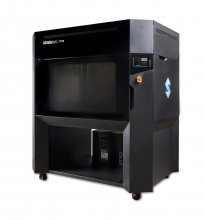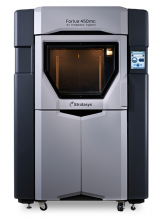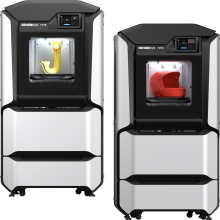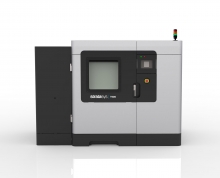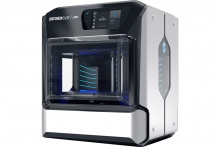Radford uses 3D printing to customize automotive manufacturing
Radford Motors uses Stratasys 3D printing technology to produce 500 parts for Lotus Type 62-2 supercar
Radford Motors builds exclusive luxury automobiles, focusing on high craftsmanship, limited-run production, customization, and performance. To prototype and build the Radford Lotus Type 62-2 production vehicle, the company relied on additive manufacturing to enable an agile development and production process.
The combination of printer capacity and strong but lightweight materials give Radford Motors the capability to design, iterate and build the tooling and components for each custom vehicle much faster and more economically than conventional production methods. The capabilities afforded by additive manufacturing help make Radford Motors’ business model of low-volume, highly custom auto production economically viable.
Using Stratasys’ GrabCAD Shop workflow software, Radford managed their 3D prints across five global locations. Up to 20 different Stratasys 3D printers were used simultaneously, including the F900, F770, Fortus 450mc, F370, and J55.
The parts additively manufactured include a large solid composite firewall sandwich core printed in two halves in ULTEM 1010 on the F900 , bonded together into a single piece, and then wrapped with carbon fiber without using a layup tool. Many exterior parts were printed with Nylon Carbon Fiber and ASA materials, including side mirror housings, radiator ducts, and body vents.
“Stratasys’ 3D printing technology gave us the design freedom and ability to easily create customized, one-off pieces and parts for these two prototype vehicles. It gave us the ability to embrace customized coachbuilding fully but with updated processes using 21st-century technologies,” said Ant Anstead, host of the Radford Returns documentary. “When relaunching Radford, we set out to only work with world-class companies. Lotus is a world-class company, Radford is a world-class company, so when we looked to 3D printed parts, we looked to Stratasys.”
“By integrating 3D printing technology into their shop, Radford has been able to bring 1960’s-style supercar auto-making into the 21st century with the high-end, hyper-customized style and features that their customers expect in a vehicle of this caliber,” said Pat Carey, Senior Vice President, Strategic Growth for Stratasys. “It’s an extreme example of something we see every day in the auto industry. Everyone making investments in new vehicles wants a deeper level of customization, and 3D printing is helping make it possible.”
Stratasys will continue to support the Radford Lotus Type 62-2 project with 3D printed parts produced using FDM , SAF , Stereolithography , and P3 Programmable Photopolymerization solutions.

